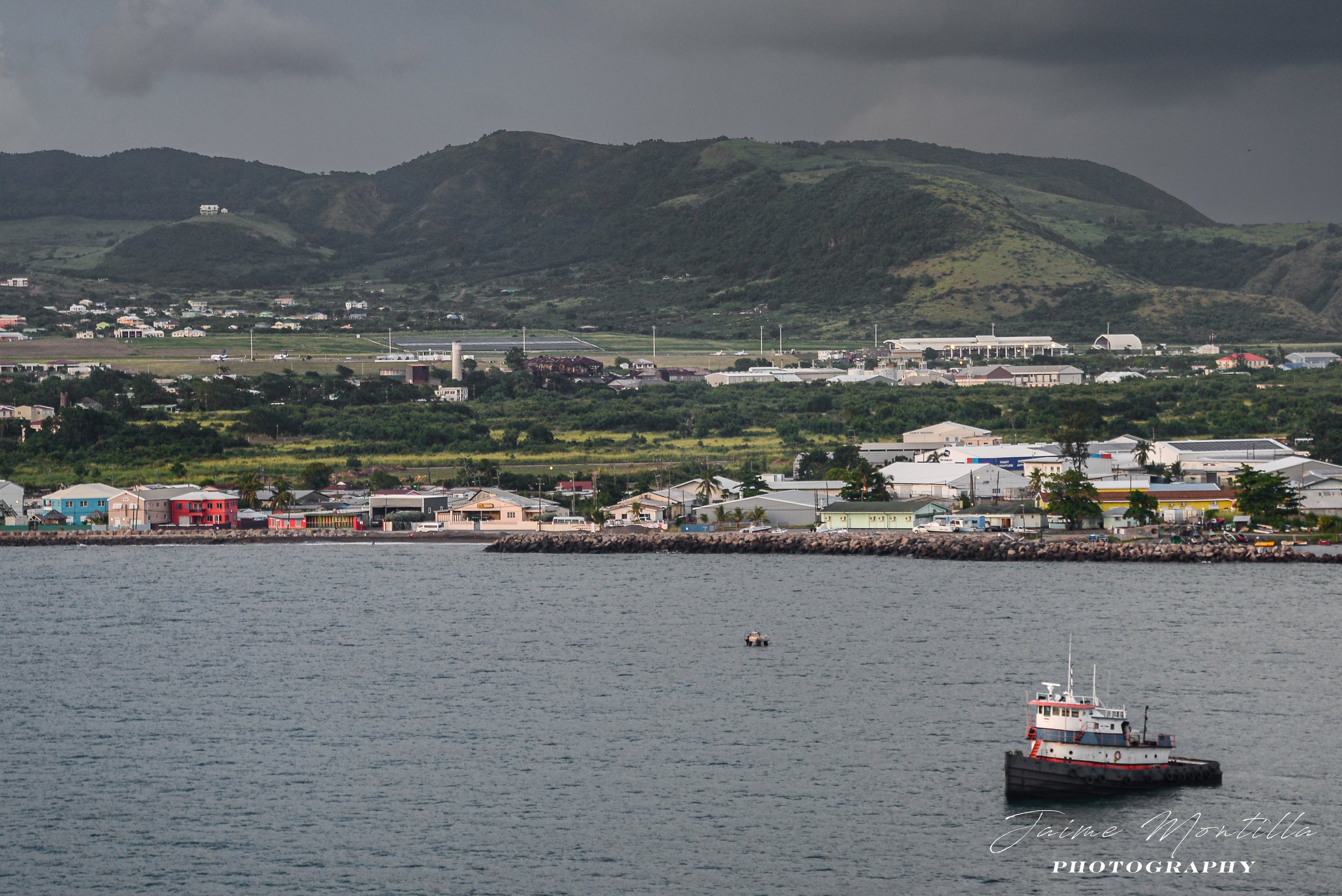
St. Kitts and Nevis
The island of Saint Cristopher as it was originally known, was discovered by Christopher Columbus on his second voyage in 1493. As it was the case with some of the other islands, the Spaniards never settled Saint Cristopher, it remained basically uninhabited until the early 1600s when a group of French settlers arrived here. In 1622, the only inhabitants of Saint Cristopher were the Kalinago natives, the indigenous Carib people of the islands.
On January 28, 1623, privateer-settler Englishman Thomas Warner landed with a small number of settlers on the island with the purpose of settling the island to grow tobacco and claimed it as the first English colony in the Caribbean. In 1625, Warner allowed a group of Frenchmen who had sailed rom France in a piracy mission lead by Pierre Belain d'Esnambuc to settle on the island. In 1626, fearing an ambush by the natives, the English and the French attacked the Kalinago natives, killed some two thousand of them and deported the surviving ones to Dominica. The French and the English then agreed to split the island between them with the French taking Capisterre in the North and Basseterre in the south and the English took the middle.
Between 1639 and 1660 Saint Cristopher was governed by Phillippe de Longvilliers de Poincy (1584-1660) during whose rule the island of Nevis was acquired in 1651 and the capital city of Basseterre became a successful Caribbean trading port. In 1667, the Treaty of Breda required that French occupants of Saint Christopher allow the English to take back the land that had previously been theirs. Some forty five years later, as the result of the signing of the Treaty of Utrecht in 1713-1714, Saint Cristopher was given in its entirety to England who ruled until independence was attained in 1983.
Since its settlement days, Saint Cristopher, was a plantation island; first tobacco, cotton and indigo. According to an article by the National Museums Liverpool, sugar was introduced in St. Kitts in the 1640s and b y 1655 was the most important export crop. In 1770 sugar, rum and molasses were 92% of St Kitts's exports and much of the island was devoted to sugarcane harvesting. By 1775, with sixty eight estates producing muscovado sugar, St. Kitts was the wealthiest of the British possessions. However, the introduction of beet sugar and international market competition drove prices steadily downward, and by the beginning of the 20th Century the local industry was on its last legs.
Believing that profitability could be achieved with economies of scale, on February 20, 1912, a modern sugar factory was officially opened with both British and local shareholders in a new enterprise known as St. Kitts (Basseterre) Sugar Factory. Part of the sugar factory project was a narrow-gauge railway around the island that allowed for the efficient transportation of sugarcane from the outlying local independent planters estates to the new mill for processing. A 1972 report on the sugar industry highlighted the urgency of improving productivity. It recommended that a central company be set up, run by private investors and the Government. The London interests opted to sell their shares to the Government as they were not interested in becoming minority shareholders. The new ownership system was short lived as the private estates were so economically fragile that they could not secure loans without government backing. So, the government nationalized all sugar lands and on December 17, 1976 the factory, the land it was on, the machinery some of which needed replacing and the railway were sold to the Government for £1,000,000 through the St. Kitts Sugar Manufacturing Company. The acquisition of the factory and the estates by the Government was intended to keep the sugar industry alive and facilitate continued employment for all its workers. But the conditions that had caused the decline persisted, and when the price of sugar would not recover, Prime Minister Denzil L. Douglas announced that the industry would be closed at the end of the 2005 crop. The St. Kitts Sugar Manufacturing Company, was dissolved in June 2012.
In the first picture of the gallery below you can see the ruins of the central sugar mill built during 1910-11. The other pictures are of The Wingfield Estate, established in 1625 the result of the first land grant in British West Indies, the recipient of which was Sam Jefferson, 3rd Great Grandfather of Thomas Jefferson. Its original products were tobacco and indigo. It produced sugar from the 1650's until 1924, at different times by all three known methods of moving its mill; animal, water and steam power. It is also estimated that rum was distilled at Wingate beginning in 1681.









